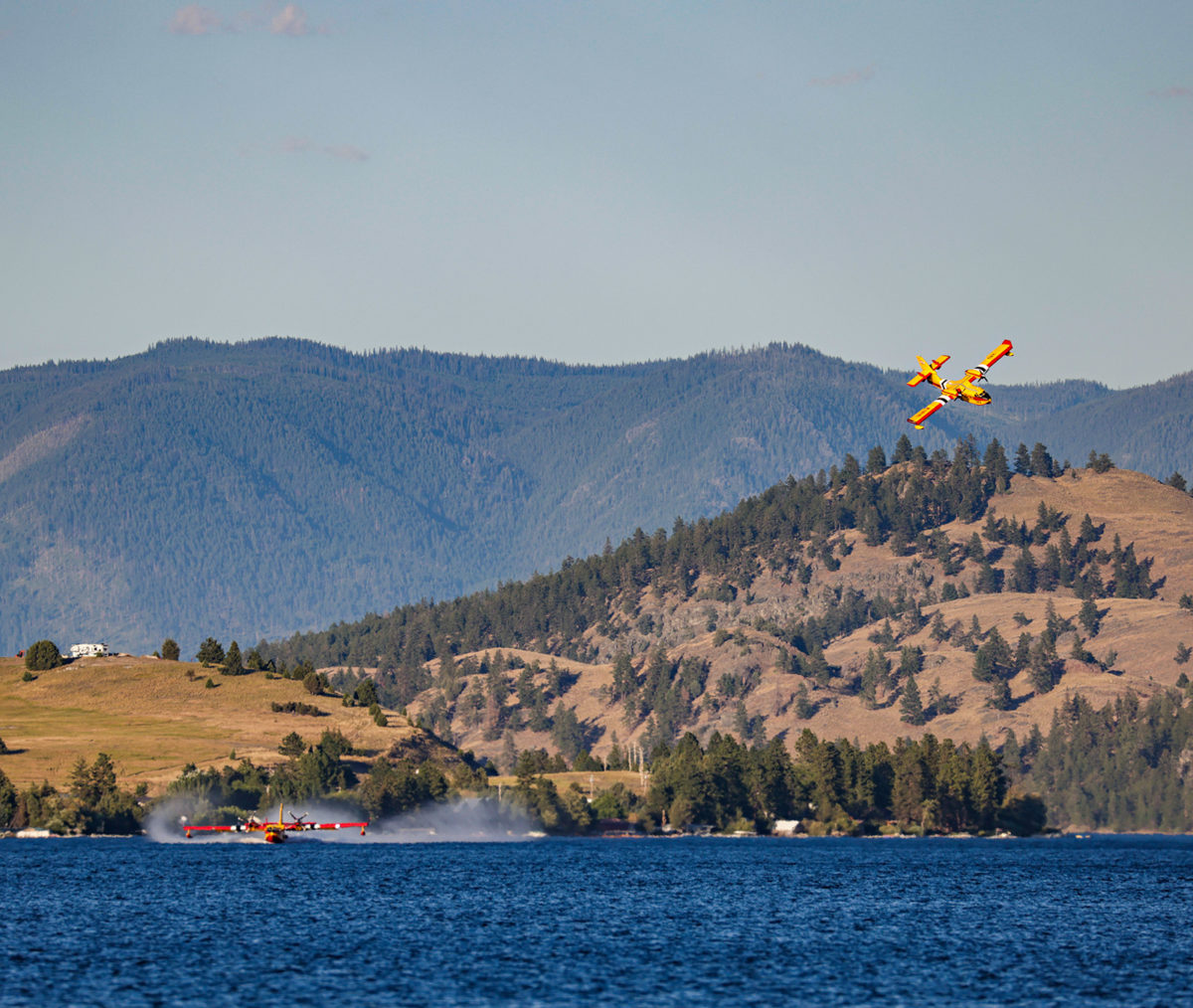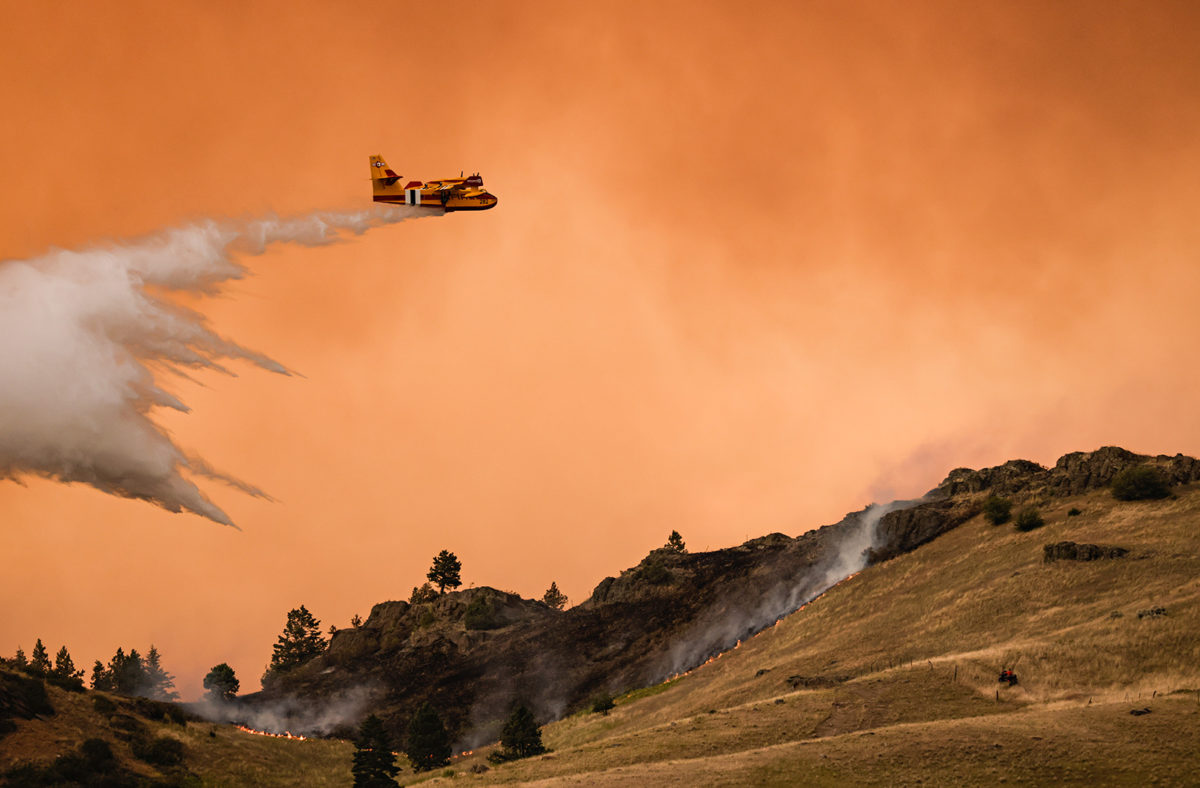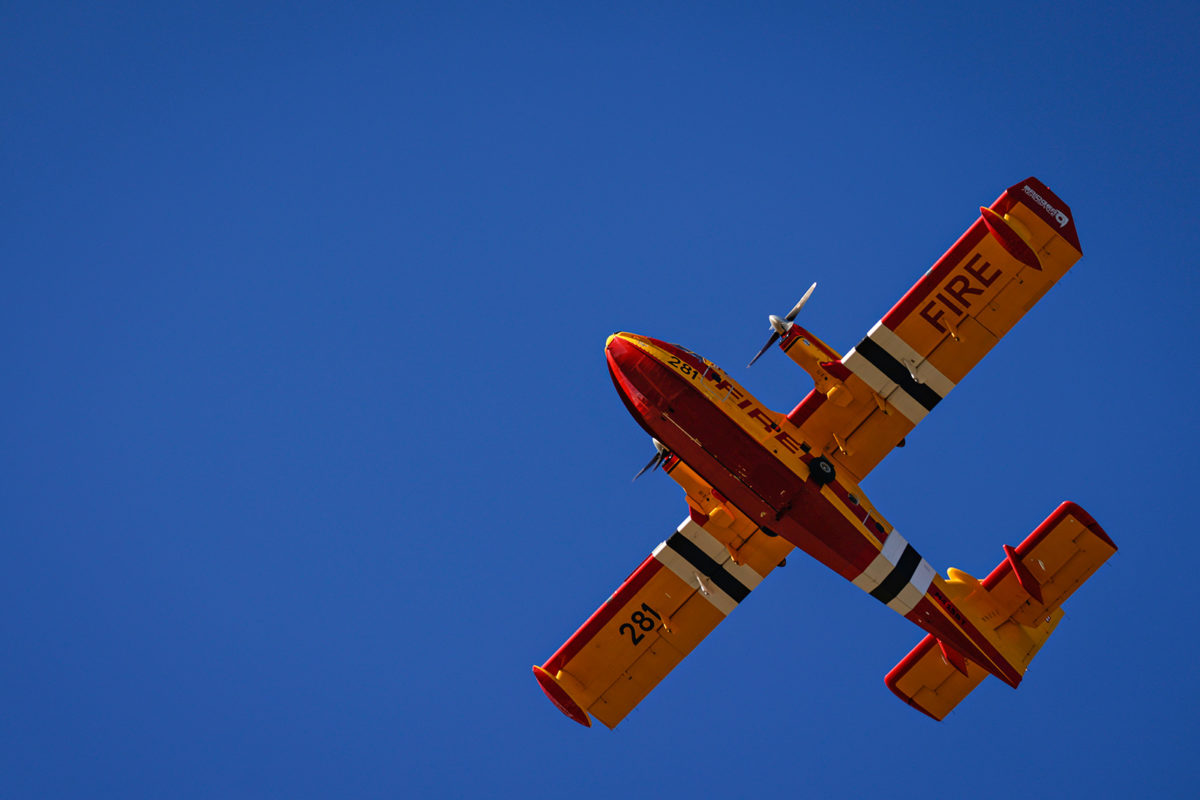Super Scoopers Provide Essential Aerial Firefighting Aid
A fleet of amphibious aircraft is currently based out of Kalispell to offer support to regional firefighters
By Micah Drew
In addition to cooler conditions and much-needed precipitation over the last few days that has slowed growth on the region’s wildfires, crews have also received additional aid from four Super Scooper aircraft currently based out of Glacier Park International Airport.
The four yellow-and-red De Havilland CL-415EAF planes are part of a fleet owned by Bozeman-based Bridger Aerospace, one of the nation’s largest aerial firefighting companies. The company owns the largest fleet of the amphibious aircraft in the country, recently purchasing a sixth Super Scooper this winter for around $30 million.
Following the recent spate of wildfires in Northwest Montana, Bridger Aerospace relocated a portion of its fleet to Kalispell to provide more immediate assistance to firefighters — two more Scoopers are currently based in Texas. Over the last two weeks, the four brightly colored planes assisted firefighting efforts on the Niarada and Mill Pocket fires west of Elmo.

“Nationally, our aerial firefighting force is pretty thinly spread out right now with a huge swath of land to cover with not that many aircraft,” said Bridger Aerospace CEO Tim Sheehy, who is also a Republican candidate for Montana’s U.S. Senate seat. “For Montana to have those planes sitting on the ground next to the lake, it’s key to making a big impact very quickly.”
Super Scoopers are the only aircraft currently manufactured specifically for firefighting, according to Sheehy. This might seem surprising given the sheer number of planes and helicopters often seen around wildfires, but other aircraft are repurposed from their traditional uses, such as passenger jetliners that are converted to retardant-dropping air tankers, or small fixed-wing craft outfitted with infrared sensors and high-tech communication equipment that operate as “spotters” on a fire.
The Scoopers, also known as water bombers, by contrast, were developed specifically to operate as aerial firefighters. Described as a “boat with wings,” pilots can skim the planes across the surface of a lake and scoop approximately 1,400 gallons of water in roughly 10 seconds. According to Bridger Aerospace, nearly 90% of wildfires occur within 20 miles of a major water source that can be utilized by Super Scoopers, meaning the planes can provide an expedient form of firefighting prowess and, despite the overhead cost of purchasing the Scoopers, one that is cost-effective in the field.
When planes are on a firefighting mission, they can fly for around 4.5 hours, which, depending on how far a fire is from a water source, can amount to dozens of water drops per flight. A recent flight by the Bridger Fleet on the Niarada Fire last week saw the four Scoopers make more than 18 water drops on the fire in less than three hours. Planes that drop the standard red retardant or other water tankers, on the other hand, must return to an airfield between each drop.

With such a unique design and mission, Super Scooper pilots must blend the skills required of airline pilots with more niche abilities seen in military and bush pilots, as well as be expert boat drivers.
“Once you’re on the water, you’re not an aircraft, you’re a 40,000 pound boat,” Sheehy said. “But when you’re back in the air, you have to be an expert firefighter, an expert at navigating in the mountains and have the skills to communicate with the rest of the aerial fleet as well as the ground crews.”
Sheehy, a former Navy SEAL, still flies water bomber missions himself, recently assisting on a fire just outside of Spokane.
“To me, it’s the best job in the world, and I’ve done a lot of pretty cool jobs,” he said. “Flying water bombers is just really amazing, not the least because you can see the impact you have on the ground almost immediately. It’s a great feeling to be out there dropping a tank of water 10 yards from someone’s home and know you’re helping protect their livelihood.”

The Bridger Aerospace fleet of Super Scoopers, along with the company’s roughly two dozen other firefighting aircraft, have been moving around North America since spring, when wildfires erupted in eastern Canada. Sheehy said most of the fleet will remain around the Western U.S. for the rest of the wildfire season.
“In any of these fire incidents, the most important thing is having aircraft ready to launch quickly for initial attack,” Sheehy said. “Putting out a fire when it’s five, 10 or 20 acres is exponentially easier than trying to corral a fire that’s 1,000 acres or more. And I say corral because at that size you can kind of direct it and keep it away from structures, but really the best you can do is manage it until Mother Nature decides it’s done.”